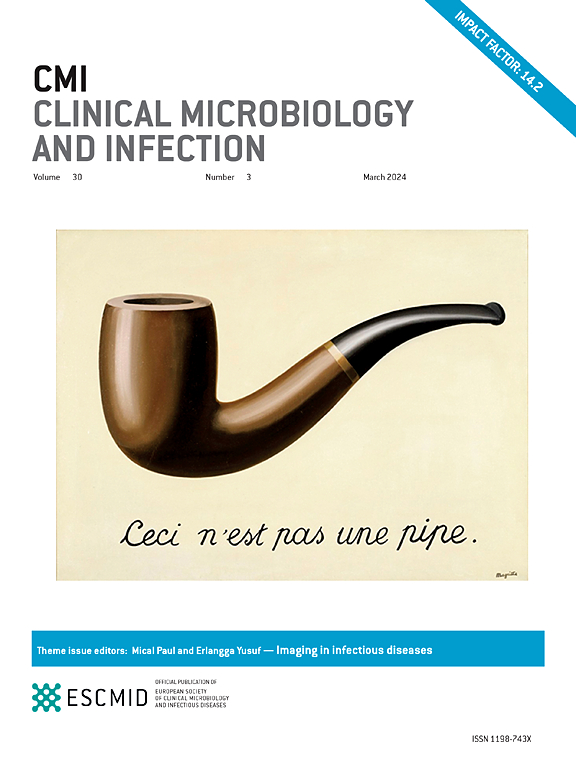Global vaccination against hepatitis E virus: position paper from the European Society of Clinical Microbiology and Infectious Diseases Viral Hepatitis Study Group
IF 10.9
1区 医学
Q1 INFECTIOUS DISEASES
引用次数: 0
Abstract
Scope
Hepatitis E virus (HEV) is a significant global health issue, impacting both low- and middle-income countries and industrialized nations. HEV genotypes 1 and 2, primarily transmitted through contaminated water, are endemic in low- and middle-income countries, whereas genotypes 3 and 4 are zoonotically transmitted in industrialized regions. Acute HEV infection poses severe risks, particularly to pregnant women and immunocompromised individuals, whereas chronic HEV infection leads to serious complications in those with pre-existing liver disease and transplant recipients. The development of an HEV vaccine offers new prevention opportunities, though its availability and integration into global immunization programmes remain limited.
Methods
This position paper was developed by the European Society of Clinical Microbiology and Infectious Diseases Viral Hepatitis Study Group through an extensive review of clinical data, safety profiles, efficacy, and immunogenicity of HEV vaccines. The study group focused particularly on high-risk and special populations, synthesizing global health insights and incorporating recommendations from the Strategic Advisory Group of Experts to formulate strategies for wider HEV vaccination use.
Questions addressed in the position paper
The position paper evaluates the efficacy and safety of HEV vaccines in both general and special populations. It identifies key barriers to the integration of HEV vaccines into routine immunization programmes, including infrastructure limitations, costs, and vaccine accessibility. The paper also proposes strategies to overcome these challenges and improve vaccine distribution. Furthermore, it addresses ways to enhance public awareness and international cooperation to promote HEV vaccination efforts globally.
Implications
European Society of Clinical Microbiology and Infectious Diseases Viral Hepatitis Study Group recommends HEV vaccination for high-risk groups, including women of childbearing age, patients with chronic liver diseases, and immunosuppressed individuals. Prioritizing investments in vaccine logistics, integrating diagnostics, and educational outreach can enhance uptake.
全球戊型肝炎病毒疫苗接种:ESGVH-ESCMID 的立场文件。
范围:戊型肝炎病毒(HEV)是一个重大的全球健康问题,对中低收入国家(LMICs)和工业化国家都有影响。戊型肝炎病毒基因 1 型和 2 型主要通过受污染的水传播,在中低收入国家流行,而基因 3 型和 4 型则在工业化地区通过人畜共患病传播。急性 HEV 感染会带来严重风险,尤其是对孕妇和免疫力低下的人,而慢性 HEV 感染则会导致原有肝病患者和接受移植者出现严重并发症。HEV 疫苗的开发提供了新的预防机会,但其可用性和纳入全球免疫计划的程度仍然有限:本立场文件由欧洲临床微生物学和传染病学会(ESCMID)病毒性肝炎研究小组(ESGVH)通过对 HEV 疫苗的临床数据、安全性、有效性和免疫原性的广泛审查而制定。该研究小组特别关注高危人群和特殊人群,综合了全球健康方面的见解,并采纳了战略专家咨询小组 (SAGE) 的建议,为更广泛地使用 HEV 疫苗制定了战略:该立场文件评估了 HEV 疫苗在普通人群和特殊人群中的有效性和安全性。它指出了将 HEV 疫苗纳入常规免疫计划的主要障碍,包括基础设施限制、成本和疫苗的可及性。本文还提出了克服这些挑战和改善疫苗分配的策略。此外,本文还探讨了如何提高公众意识和加强国际合作,以促进全球范围内的 HEV 疫苗接种工作:ESGVH-ESCMID建议育龄妇女、慢性肝病患者和免疫抑制人群等高危人群接种HEV疫苗。优先投资疫苗物流、整合诊断和教育推广可提高疫苗接种率。
本文章由计算机程序翻译,如有差异,请以英文原文为准。
求助全文
约1分钟内获得全文
求助全文
来源期刊
CiteScore
25.30
自引率
2.10%
发文量
441
审稿时长
2-4 weeks
期刊介绍:
Clinical Microbiology and Infection (CMI) is a monthly journal published by the European Society of Clinical Microbiology and Infectious Diseases. It focuses on peer-reviewed papers covering basic and applied research in microbiology, infectious diseases, virology, parasitology, immunology, and epidemiology as they relate to therapy and diagnostics.

 求助内容:
求助内容: 应助结果提醒方式:
应助结果提醒方式:


